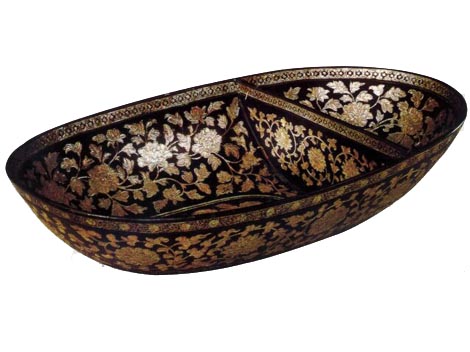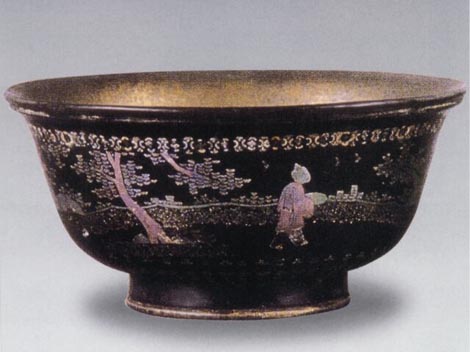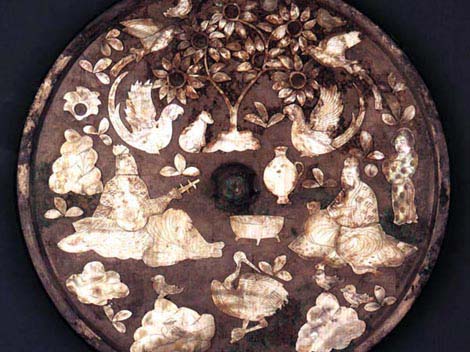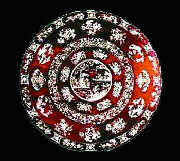


The history of Chinese people using bone objects is long and rich. As early as during the Hemudu Culture about 7,000 years ago, people used bone articles as tools. Realizing the bones' natural beauty, they adopted them for decorative purpose, and later used them as utensils.

During the following dynasties, continuous developments were made to the processing of bone articles. Among them is the art of inlaying bones into wood, which is a traditional craft in Ningbo of East China's Zhejiang Province, and is hailed as one of the four treasures in Ningbo, together with "Guild Wood Carving", "Guild Paint", and "Gold and Silver Embroidery."
During the Sui (581-618BC) and Tang (618-907BC) dynasties, bone-inlaid wood artworks were presented as tributes to the royal court, and by the time of the Song Dynasty (960-1279BC), the art in Ningbo had become a mature craft with a strong local flavor.
In making bone-inlaid wood artworks, pieces of ivory, bones, bronze, or stones are processed and carved into certain decorative patterns before being inlaid into a notched wooden base. After that, the semi-finished product is polished and further embellished before being painted.
In terms of making techniques, there are three inlaying methods: high, flat and high-and-flat inlaying. In the case of high inlaying, the inlaid objects, usually carved with decorative patterns, are higher than the surface of the wooden base; while in flat inlaying, the inlaid objects are level with the wooden base. The artworks can be applied to buildings or furniture for ornamental or practical purposes.
Though the bone-inlaying method has been used in utensils since ancient times, it was not seen in furniture until the Qing Dynasty(1644-1911BC), and reached its peak in the reign of Emperor Qianlong, with four artistic features.
First, the bone-inlaid artworks featured excellent craftsmanship, and were exquisitely designed.
Second, rosewood and on mosia henryi (a precious hardwood) wood were used as raw materials, making the bone-inlaid artworks simple and pure.
Third, the aforementioned three inlaying methods, which continue to be in use today, were employed.
Finally, the artworks covered a wide range from historical figures and landscapes, to flowers and birds, as well as other fields.
There are many exquisite bone-inlaid works of the Qing Dynasty still existing across China today.
An octagonal bone-inlaid tea table, which was a tribute from a local government official in Ningbo to the imperial court, can still be found in the Hall of Happiness and Longevity in Beijing's Summer Palace.
Meanwhile, in Ningbo Museum, there is an ivory-inlaid bed board with vivid bone-inlaid artworks featuring historical figures or landscapes. For example, on a three-centimeter-high figural artwork, all five of the sense organs are clearly carved, which shows the superb bone-inlaying craftsmanship of that time.
The traditional craft has been further developed in modern times, as many more bone-inlaid styles have been created and applied in various kinds of furniture, with the styles being used for interior decoration in modern hotels and residential.





